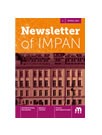Birch’s theorem on forms in many variables with a Hessian condition
Volume 221 / 2025
Abstract
Let $F \in \mathbb Z[x_1, \ldots , x_n]$ be a homogeneous form of degree $d \geq 2$, and $V_F^*$ the singular locus of the hypersurface $\{\mathbf x \in \mathbb A^n_{\mathbb C}: F(\mathbf x) = 0 \}$. A longstanding result of Birch states that there is a non-trivial integral solution to the equation $F(x_1, \ldots , x_n) = 0$ provided $n \gt \mathrm{dim}\,V_F^* + (d-1) 2^d$, and there is a non-singular solution in $\mathbb R$ and $\mathbb Q_p$ for all primes $p$. We give a different formulation of this result. More precisely, we replace $\mathrm{dim}\,V_F^*$ with a quantity $\mathcal H_F$ defined in terms of the Hessian matrix of $F$. This quantity satisfies $0 \leq \mathcal H_F \leq \mathrm{dim}\, V_F^*$; therefore, we improve on the aforementioned result of Birch if $\mathcal H_F \lt \mathrm{dim}\, V_F^*$. We also prove the corresponding result for systems of forms of equal degree.









